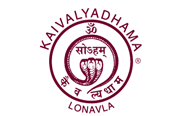Submission Guidelines
This document provides details on typesetting and layout requirements pertaining to final manuscript submission to Journal of Applied Yoga Studies.
Initial Manuscript Submission:
This section provides details on requirements pertaining to initial manuscript submission to the Journal of Applied Yoga Studies.
- Submissions must be made through the online submission system. Mailed or emailed submissions will not be accepted.
- Articles submitted to the main article section will undergo blind peer review. Authors can expect the peer review process to take approximately 12-16 weeks from submission to first decision.
- Before submitting, Authors should be able to answer YES to all the following questions:
- The manuscript is an original submission not previously published or under consideration of another publication. Authors who have published clinical results of yoga/mind-body research elsewhere may submit the philosophical and theoretical foundation underlying the interventions.
- The manuscript offers an important contribution to the field of applied yoga studies.
- The manuscript follows the formatting guidelines as set in the final submission guidelines below, is well organized, uses headings and subheadings to guide readers through the paper, uses italics when applicable, and follows the publication guidelines found in the APA Publication Manual. Please use the manual for APA requirements:
- Sanskrit terms are defined and italicized with transliterations when applicable.
- References are complete, correctly formatted in APA (6th ed.), and include URLs and DOIs for electronic resources.
- The manuscript is a maximum of 5000 words excluding references. An exception can be made in the case of a deserving article.
- The abstract is a maximum of 300 words.
- A list of five to ten keywords that closely reflect key concepts of the article is included.
- Author/Authors name(s), address (es), position(s), affiliation(s), or other potentially identifying information do not appear anywhere in the text, headers/footers, title, keywords, abstract, document name, or file properties of the Main article file.
- Tables, Figures, and Appendices are embedded in the manuscript. Figures are high-resolution (300 dpi) .jpg. .tif or .png files.
- Manuscript DOES NOT include a title page (These will be provided by the system).
- Author has obtained any necessary approvals from his/her institutional review board (IRB) and/or other agencies to conduct and publish research involving human subjects.
- Author has obtained any necessary copyright permission to reproduce tables, figures, or excerpts.
All authors have approved the submitted version of the manuscript and the corresponding author takes responsibility for this.
Final Manuscript Submission:
This section provides details on formatting, typesetting and layout requirements pertaining to final manuscript submission to the Journal of Applied Yoga Studies.
Formatting Requirements
- Do not include a title page or abstract. (Begin the document with the introduction; a title page, including the abstract, will be added to your paper by the editors.)
- Do not include page numbers, headers, or footers. These will be added by the editors.
- Write your article in English. Both American English or British English are fine but this should be consistent throughout the manuscript.
- Submit your manuscript, including tables, figures, appendices, etc., as a single file (Word, RTF, or PDF files are accepted).
- Page size should be 8.5 x 11-inches.
- All margins (left, right, top and bottom) should be 1.5 inches (3.8 cm), including your tables and figures.
- Single space your text.
- Use a single column layout with both left and right margins justified.
-
Font:
- Main Body—12 pt. Times New Roman or the closest comparable font available
- Footnotes—10 pt. Times New Roman or the closest comparable font available
- If figures are included, use high-resolution figures, preferably encoded as encapsulated PostScript (eps).
- Copyedit your manuscript, follow guidelines of APA format for citations and use of italics.
- When possible, there should be no pages where more than a quarter of the page is empty space. Please use the manual for APA requirements:
Additional Recommendations
Indenting, Line Spacing, and Justification
Indent all paragraphs except those following a section heading. An indent should be at least 2 em-spaces.
Do not insert extra space between paragraphs of text with the exception of long quotations, theorems, propositions, special remarks, etc. These should be set off from the surrounding text by additional space above and below.
Don't "widow" or "orphan" text (i.e., ending a page with the first line of a paragraph or beginning a page with the last line of a paragraph). All text should be left-justified (i.e., flush with the left margin—except where indented). Where possible, it should also be right-justified (i.e., flush with the right margin). "Where possible" refers to the quality of the justification. For example, LaTeX and TeX do an excellent job of justifying text. Word does a reasonable job. But some word processors do a lousy job (e.g., they achieve right justification by inserting too much white space within and between words). We prefer flush right margins. However, it is better to have jagged right margins than to have flush right margins with awkward intra- and inter-word spacing. Make your decision on whichever looks best.
Language & Grammar
All submissions must be in English. Foreign words and phrases should be defined. Submission must follow the APA Publication guidelines.
Article Length
The submission is a maximum of 5000 words excluding references. Because this journal publishes electronically, page limits are not as relevant as they are in the world of print publications. This said, authors should exercise some discretion with respect to length.
Colored text
Set the font color to black for the majority of the text. We encourage authors to take advantage of the ability to use color in the production of figures, maps, etc., however, you need to appreciate that this will cause some of your readers problems when they print the document on a black & white printer. For this reason, you are advised to avoid the use of colors in situations where their translation to black and white would render the material illegible or incomprehensible.
Please ensure that there are no colored mark-ups or comments in the final version, unless they are meant to be part of the final text. (You may need to "accept all changes" in track changes or set your document to "normal" in final markup.)
Emphasized text
Whenever possible use italics to indicate text you wish to emphasize rather than underlining it. The use of color to emphasize text is discouraged.
Font faces
Except, possibly, where special symbols are needed, use Times or the closest comparable font available. If you desire a second font, for instance for headings, use a sans serif font (e.g., Arial or Computer Modern Sans Serif).
Font size
The main body of text should be set in 12pt. Avoid the use of fonts smaller than 6pt.
Headings
Headings (e.g., start of sections) should be distinguished from the main body text by their fonts or by using small caps. Use the same font face for all headings and indicate the hierarchy by reducing the font size. There should be space above and below headings.
Main text
The font for the main body of text must be black and, if at all possible, in Times or closest comparable font available.
Titles
Whenever possible, titles of books, movies, etc., should be set in italics rather than underlined.
Footnotes
When using footnotes, they should appear at the bottom of the page on which they are referenced rather than at the end of the paper. Footnotes should be in 10 pt. Times or closest comparable font available, they should be single spaced, and there should be a footnote separator rule (line). Footnote numbers or symbols in the text must follow, rather than precede, punctuation. Excessively long footnotes are probably better handled in an appendix. All footnotes should be left and right-justified (i.e., flush with the right margin), unless this creates awkward spacing.
Tables and Figures
To the extent possible, tables and figures should appear in the document near where they are referenced in the text. Large tables or figures should be put on pages by themselves. Avoid the use of overly small type in tables. In no case should tables or figures be in a separate document or file. All tables and figures must fit within 1.5" margins on all sides (top, bottom, left and right) in both portrait and landscape view.
Mathematics
Roman letters used in mathematical expressions as variables should be italicized. Roman letters used as part of multi-letter function names should not be italicized. Whenever possible, subscripts and superscripts should be a smaller font size than the main text.
Short mathematical expressions should be typed inline. Longer expressions should appear as display math. Also expressions using many different levels (e.g., such as the fractions) should be set as display math. Important definitions or concepts can also be set off as display math.
Equations should be numbered sequentially. Whether equation numbers are on the right or left is the choice of the author(s). However, you are expected to be consistent in this.
Symbols and notation in unusual fonts should be avoided. This will not only enhance the clarity of the manuscript, but it will also help ensure that it displays correctly on the reader's screen and prints correctly on her printer. When proofing your document under PDF pay particular attention to the rendering of the mathematics, especially symbols and notation drawn from other than standard fonts.




